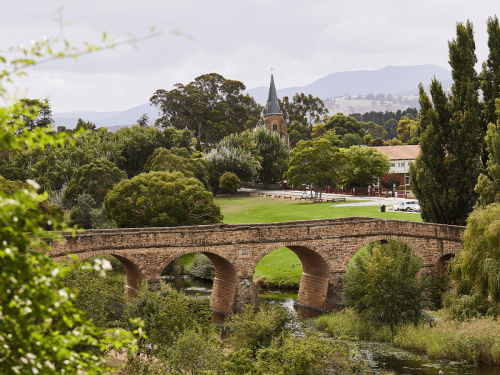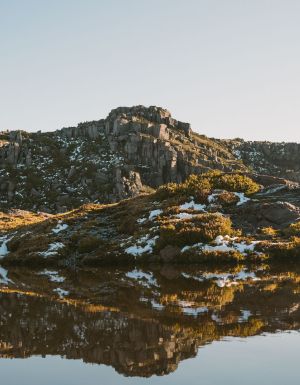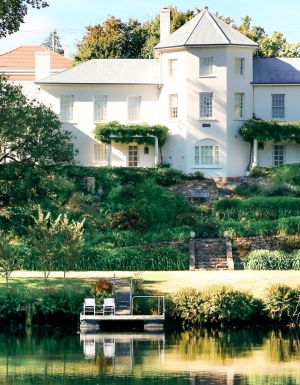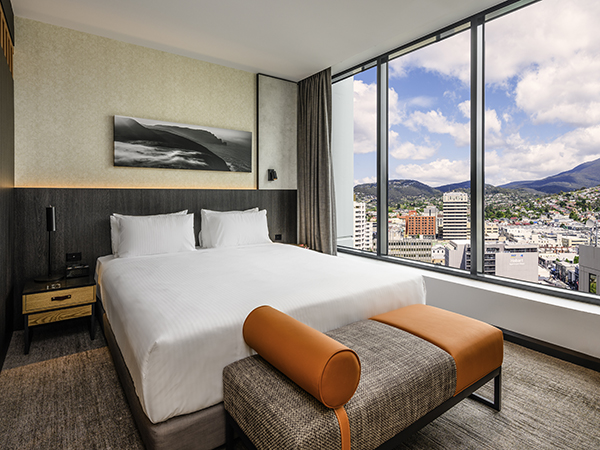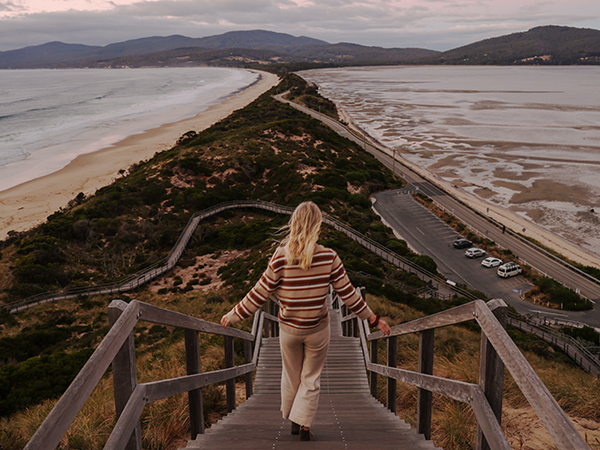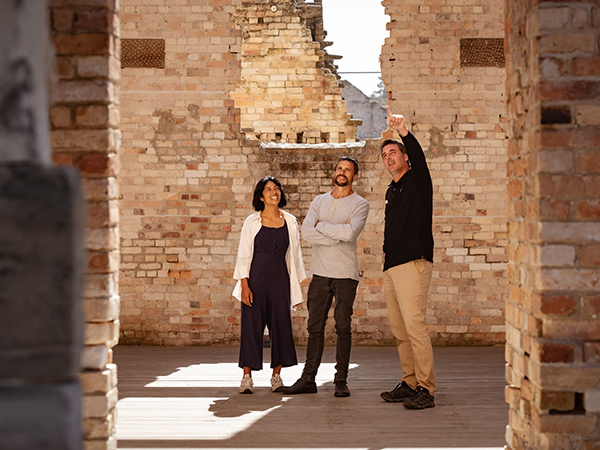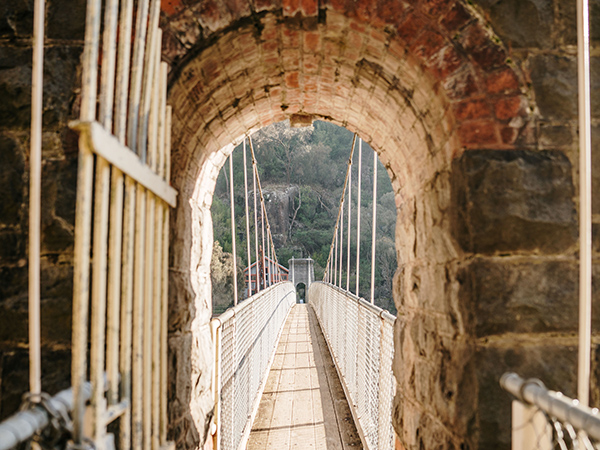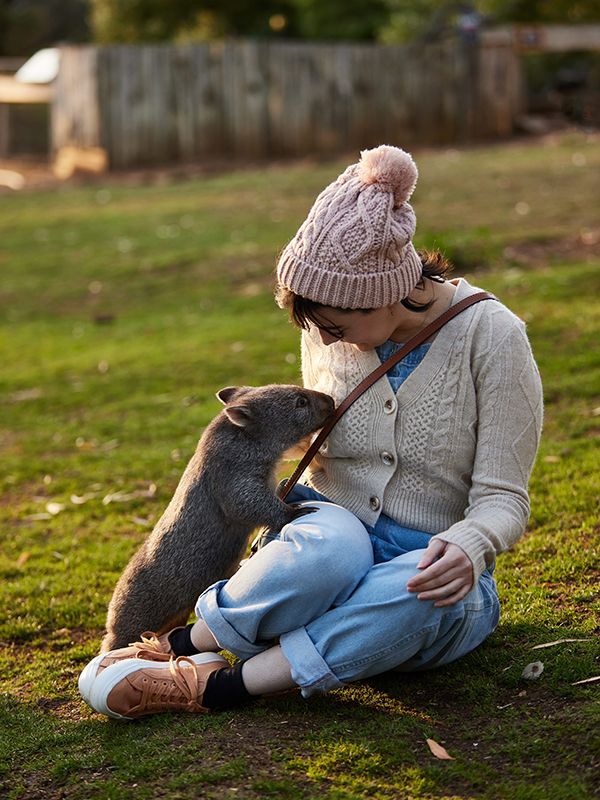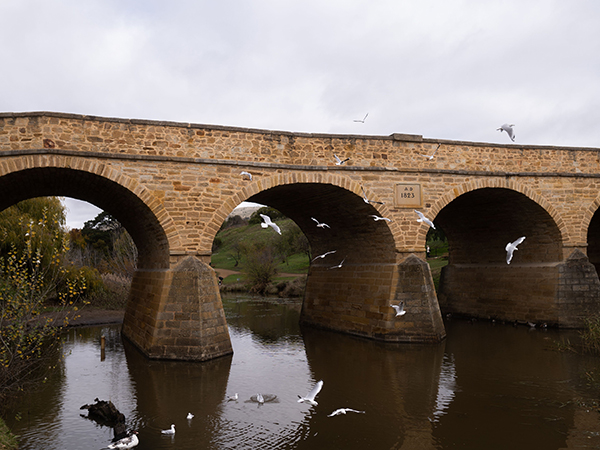From convict-built bridges to bakeries brimming with scallop pies, let this glovebox guide take you on a journey from Hobart to Launceston.
The drive from Hobart to Launceston could mean two and a half hours of straightforward, no-nonsense driving via the Midland Highway, also known as Heritage Highway. Or it could be the highlight of your Tasmanian trip: stopping at bucolic villages; grazing on a cheese platter beside a duck-filled lake; and sipping the best golden whiskey you’ve ever had.
Whether you’re stopping along the way at one of the many boutique accommodations or simply want to break up your driving by expanding the trip by a few hours, we’ve compiled the ultimate glovebox guide to help you along your travels.
Hobart
Kick off your road trip in photogenic Hobart, where the blend of history and delicious food and wine sets the tone for a delightful journey. Aim to visit Tassie’s capital on a Saturday so you can explore the local arts and craft stalls at Salamanca Market and snack on a dizzying array of street food.
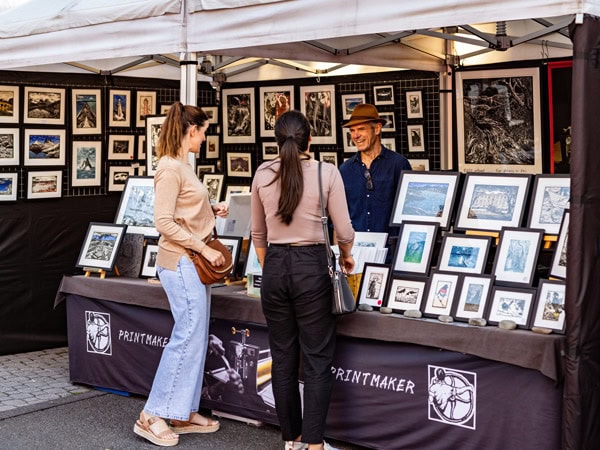
Art lovers should squirrel away some time for jumping on the ferry and travelling out to MONA art museum , where you can easily spend the entire day exploring art, eating cheese and drinking beer.
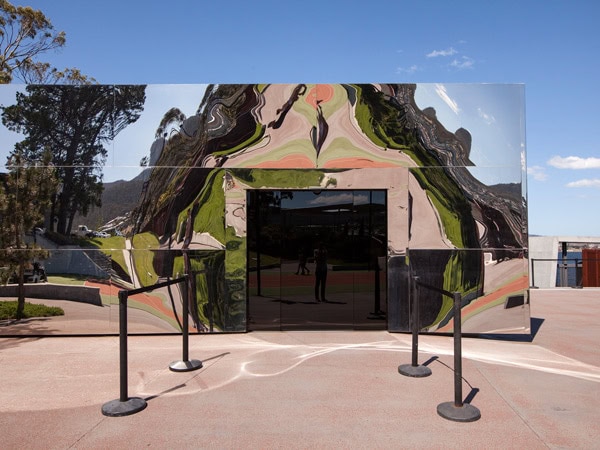
For an adrenaline rush and stunning views, dart up to Mt Wellington/Kunanyi for some astonishing panoramic views from the summit. If you have more time, consider a day trip to Bruny Island or Port Arthur, or take a drive through the pretty-as-a-picture Huon Valley. Even if you can’t squeeze everything in, there are plenty of interesting spots to discover on your way to Launceston.
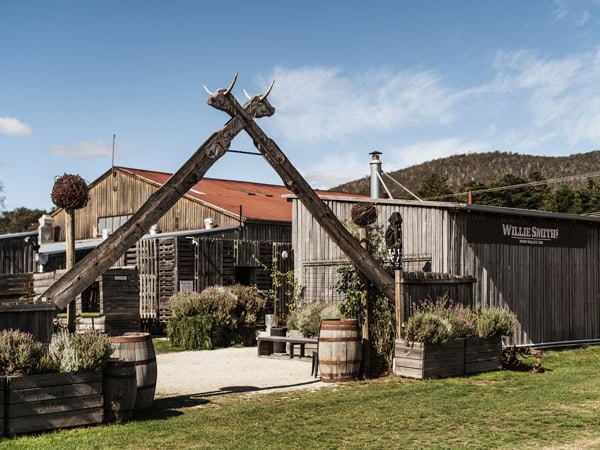
Stop 1: Richmond
Just half an hour north of Hobart is Richmond, a town straight out of a postcard with its historic vibe and charming streets.
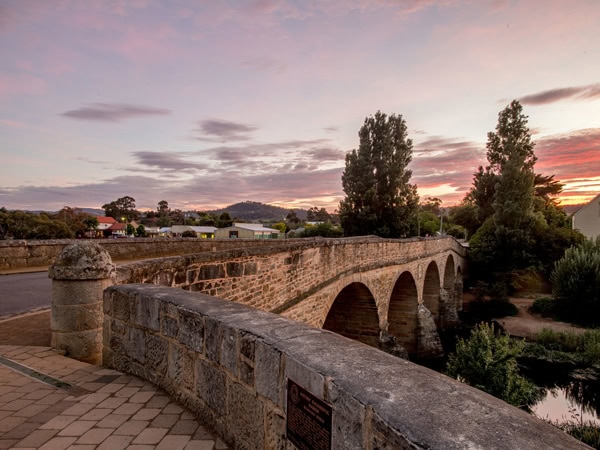
Highlights here include the 200-year-old Richmond Bridge and the country’s oldest surviving Catholic Church: St John the Evangelist Catholic Church.
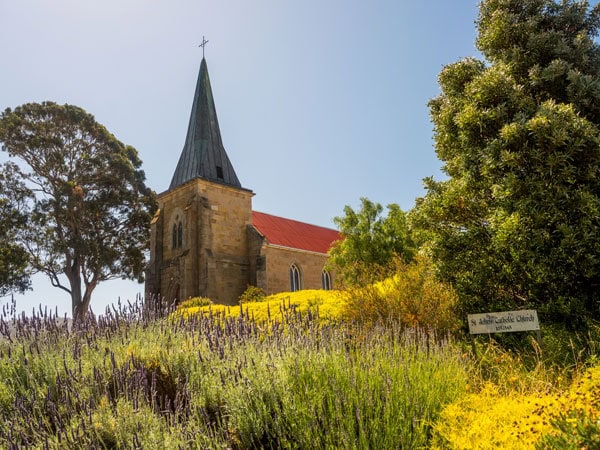
Continue to step back in time at the Richmond Gaol, where you can learn about Tasmania’s convict past. Hungry? Grab a snack at the Richmond Bakery (the scallop pies are legendary) and a lavender ice cream or bag of old-fashioned lollies at Sweets and Treats. Walk off the sugar rush at the quirky Pooseum , a science museum dedicated to animal droppings, and Old Hobart Town, a model village replicating Hobart as it stood in the 1820s.
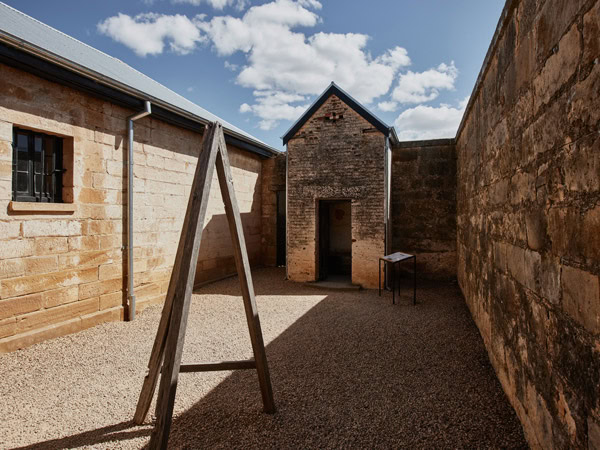
Stop 2: Oatlands
Cruise another 45 minutes along the Heritage Highway to Oatlands, with its mind-blowing 150 sandstone buildings and the only working windmill in the Southern Hemisphere, Callington Mill.
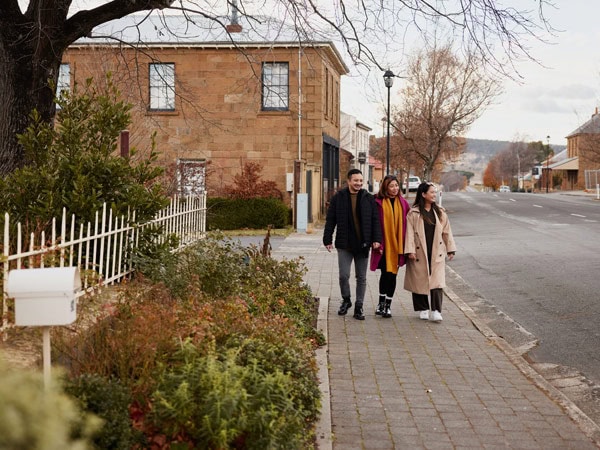
The Callington Mill Distillery is right next to it, so pop in for a whisky tasting or lunch at the restaurant while you’re at it.
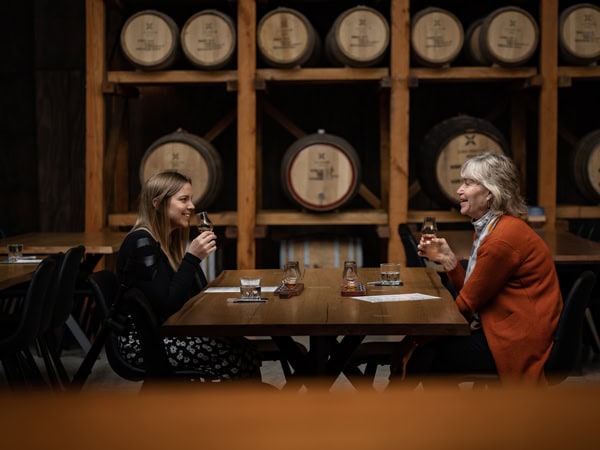
If there’s still time, wander around idyllic Lake Dulverton, with its half-submerged sculptures of cows, or chill out with an excellent coffee at Bunch.

Stop 3: Ross
The pretty town of Ross, just a 30-minute scoot along the highway from Oatlands, is all about history and charm. Take your binoculars to check out the Ross Bridge, famous for its intricate carvings by convict and former stonemason Daniel Herbert.
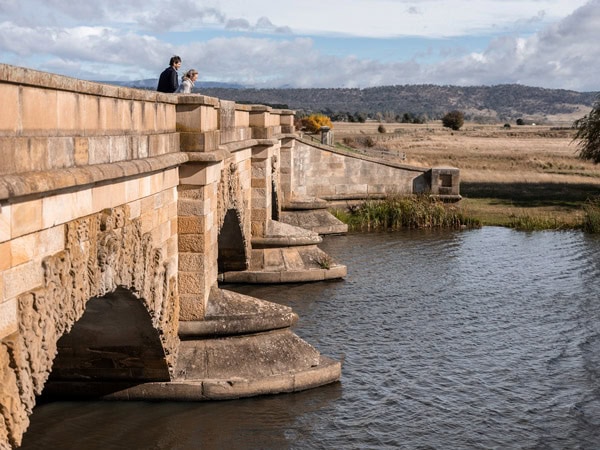
The mindboggling 186 detailed carvings depict animals, plants, local personalities and even Herbert himself. Ross also serves up another fascinating piece of history to visitors: the Ross Female Factory – the country’s most well-preserved female convict sites.

Another intriguing spot to check out is the crossroads in the middle of town, dubbed the Four Corners of Ross. Here, you can choose your path: will it be salvation at the Catholic Church, damnation at the old gaol, re-creation at the Town Hall or temptation at the Ross Hotel ? If you opt for the pub, you’ll find delicious Tassie beers on tap and dishes with the freshest Tassie ingredients. If you’re a knitter or wool lover, swing by the Tasmanian Wool Centre where you can learn about the town’s wool industry and grab yourself a super-soft merino poncho.
Stop 4: Campbell Town
One and a half hours up the track from Hobart, Campbell Town is more than just a pit stop; it’s a treasure trove of history and stories. Walk the Convict Brick Trail, where each brick tells a story of a convict’s journey to Australia and then peruse the aptly named Red Bridge, crafted by convict engineer James Blackburn.
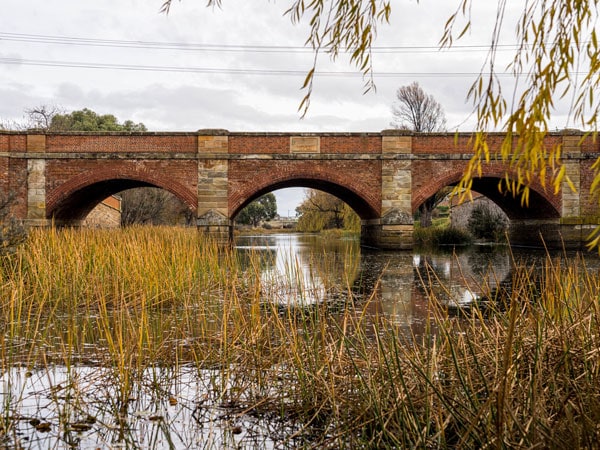
Built from 1.5 million red-clay bricks right on site, this historic bridge still stands strong. After soaking up some history, grab a book and a coffee at The Book Cellar , a gorgeous bookshop located in the convict cellars under an 1830s-era coaching inn.
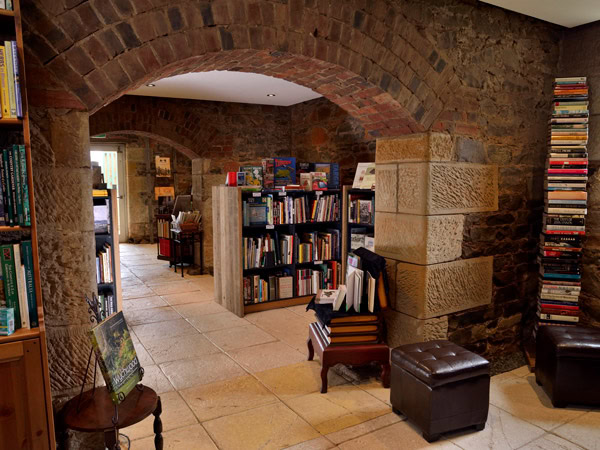
Stop 5: Longford
If you veer off the Midland Highway at Campbell Town and take Mount Joy Road, you’ll find yourself in the delightful little town of Longford. Here you’ll find two stunning colonial estates very much worth exploring: Woolmer’s Estate and Brickendon, which are listed as World Heritage Sites. Walking in their beautiful gardens and convict-built historic buildings is like stepping into a Jane Austen novel. If you want to stay longer, both properties boast gorgeous accommodation, which will allow you more time to indulge in Longford’s antique shops and hearty pub food.
Stop 6: Perth
A pretty little village, Perth has over 33 heritage buildings that are incredibly well preserved. Start with a stroll down Main Road to admire the charming buildings and impressive Georgian houses. Peckish? Pop into the Tasmanian Honey Company to sample the divine leatherwood honey and Southern Sky Cheese Company, where you’ll find some of Tasmania’s best handcrafted cheeses.
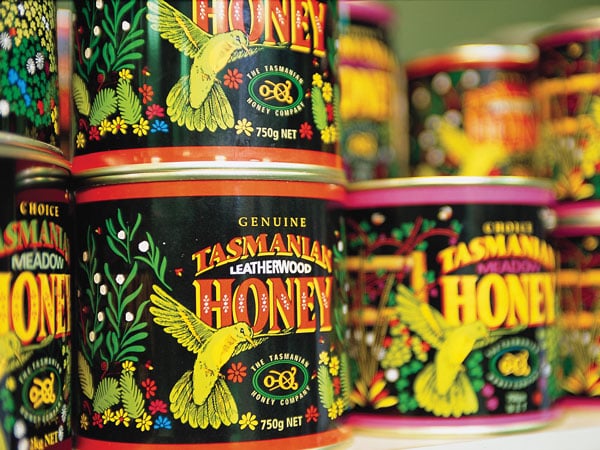
Stop 7: Launceston
Hooray, you’ve made it to Launceston – Tassie’s second-largest city and a mix of natural beauty, fascinating museums and a pumping food scene, with gourmet restaurants serving local truffles, cheese, and wild abalone.
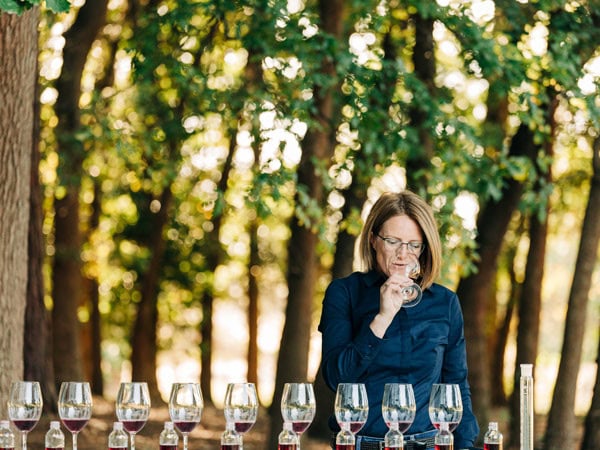
Wine lovers will be overjoyed to discover the 30 or so vineyards in the Tamar Valley, just 15 minutes outside of Launceston.

Must-visit vineyards include Josef Chromy , Arras , Tamar Ridge , Holm Oak and Clover Hill to name just a few. But if pubs are more your style, check out our guide to the best ones in the area.
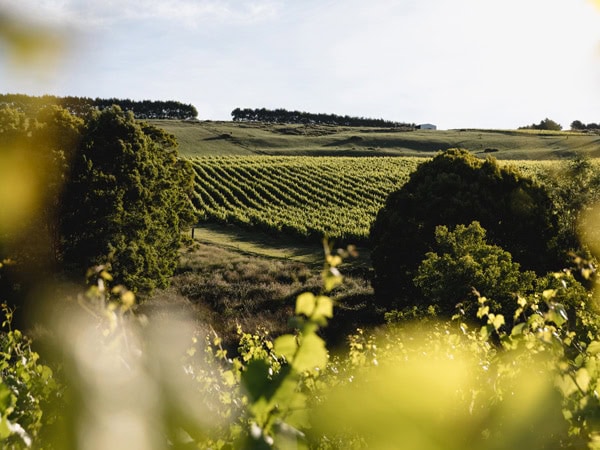
Art lovers will be equally pleased with Launceston’s generous offering of design centres, fine art galleries and museums to explore, while folks who like the great outdoors could spend a whole day at the Cataract Gorge, a sublime natural wonder with walking trails, a chairlift, a swimming pool and bevvy of stunning Indian Peafowl (what most would call peacocks).
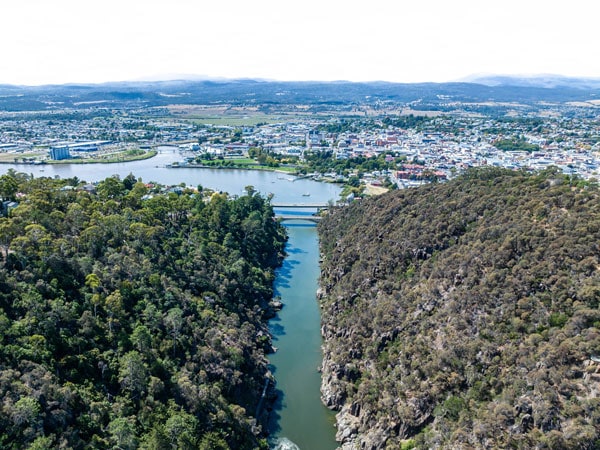
Follow our guide on the best things to do in Launceston.


